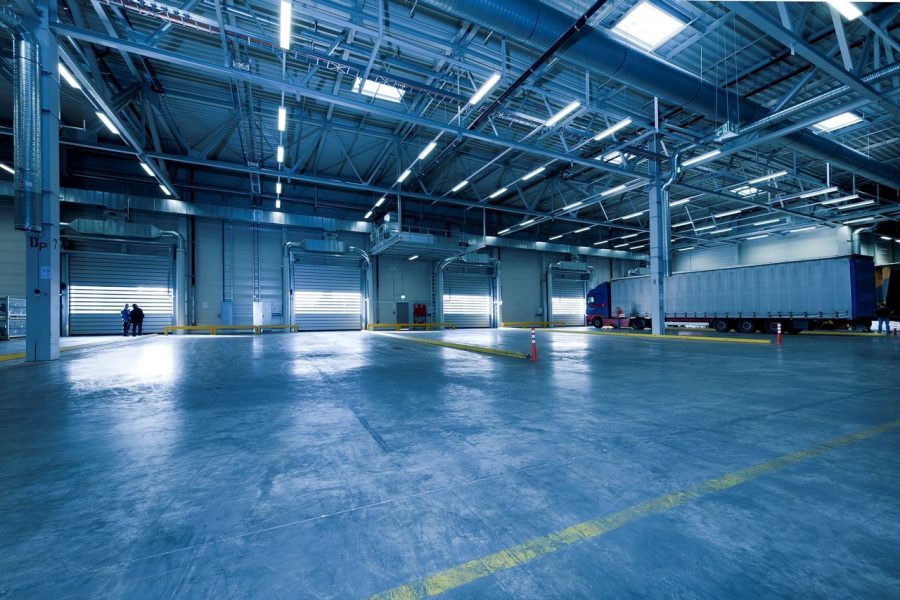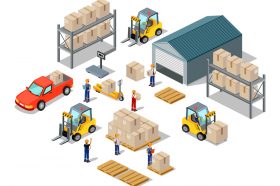Resources - Blog
3 Factors to Consider When Selecting a Warehouse for Your Products

Stay on top of the latest e-commerce and marketplace trends.
Whether you are running a private label operation or importing products through Alibaba, Amazon Prime is one of the fastest and easiest ways to boost sales. With free two-day shipping for 100 million+ Prime users, plus Amazon customer service and returns, Prime helps you take advantage of customer trust in Amazon. However, you’ll still have to choose between shipping directly from a factory to FBA warehouses, using a third-party FBA prep service, using your own warehouse, or qualifying for Seller Fulfilled Prime and fulfilling orders yourself. In the case of the latter two options, you’ll have to carefully consider your warehouse based on numerous factors that will affect costs, products, shipping speed, and fulfillment options. Below are three considerations when selecting a warehouse for your products:
1. Geographical Location and Product Demand
Your products, fulfillment options, and customer base each affect where your warehouse should be located. In most cases, your primary consideration is proximity. FBA – If you’re using FBA, you ideally want your warehouse close to an Amazon fulfillment center. However, you can still look for a balance of proximity to port/import center and FBA warehouse to manage costs on both ends. Your big consideration here is how often you import versus how often you ship to FBA. Sales nexus is also important. If you’re shipping products to an FBA warehouse, you likely want your products in that state or in a sales-tax-free state to avoid creating a double nexus. Seller Fulfilled Prime – If you sell oversized items or simply don’t want to use FBA, your largest concern should be getting products to customers as quickly as possible. Your warehouse should be as close as possible to your largest area of geographic demand so that you can reach customers more quickly. For example, if most of your sales are on the east coast, you need a warehouse there. However, Seller Fulfilled Prime still has risks, because you will have to meet Amazon’s very strict requirements for shipping and fulfillment. You can also opt to go without a warehouse for Prime and use a service like FlexPrep or Shapiro to import directly to FBA. However, there are risks to that as well, and you should research carefully based on your needs. Consider:
- Landed transportation costs to the warehouse from manufacturing
- Estimated transportation costs from the facility to the customer
- Estimated transportation costs from the facility to the FBA warehouse
- How many people/services need to access the warehouse, and how often?
- Do you need constant access to your products, or is third-party management ideal?
- What is your shipping and receiving schedule? Is it compatible with the warehouse? If it’s seasonal can you cut costs by warehousing further from the port?
2. Rent, Utilities, and Property Taxes
Costs are obviously a huge factor in choosing a warehouse, but the direct cost of rental isn’t the only thing to consider. You also have to balance utilities, property taxes, sales nexus, and cost of additional services in managed warehouses. Similarly, you’ll have to choose between a public (typically rented monthly) warehouse and a contract (typically leased yearly) solution, which should depend on your intended length of stay. If sales tax is a concern, you can choose states that don’t use it, like Oregon or Delaware. However, rent will likely be higher in these regions, due to higher demand. Consider all your costs and determine which makes the most sense for your business. You may also be better off choosing a local warehouse in your home state to avoid creating sales nexus with a new state or a warehouse in the same state as your main Amazon FBA shipping location.
3. Building Size and Layout
If a warehouse cannot physically meet your product size, weight, and environmental requirements, it won’t work for you. The building must meet your physical requirements for storage size and options, offer environmental protection, support your lot-size storage requirement, and have a layout that works for your inventory management solutions. For example, what types of storage is available? Does the warehouse come with rail siding or transloading? Knowing what’s available in terms of technology (including warehouse management and inventory) will help you to make a better choice.
Other Considerations
- Consider climate control such as temperature and humidity, and whether you need sterile storage facilities for chemicals or electronics.
- Look at how individual products are taxed or regulated in that state.
- Some areas have strong product ordinances that could prevent you from selling HAZMAT or chemical products.
- Will you need to increase or decrease your storage requirements over time? What about seasonally?
- Some warehouses will expect you to handle everything yourself and hire your own labor. In this instance, you need to know that you can hire and trust employees in the area. Others offer services including inspection, inventory, packaging, labeling, and reporting – which could save you a lot when doing FBA prep. Consider the local workforce, local cost of hiring, and availability of affordable labor.
- Does the warehouse have a membership in associations like the International Warehouse Logistics Association (IWLA)?
Your warehouse location will affect your total costs, the products you ship, and how quickly you can move inventory to the customer or to FBA.
Always Aim for Customer Experience
The end goal is to find a warehouse and fulfillment process that works for your business, and delights your customers. Whether you use a 3PL provider or handle fulfillment yourself, your customers expect quick shipping and reliable delivery. Your business needs to keep prices competitive and still make a profit. With so many e-commerce players taking advantage of fast shipping, it’s imperative that you provide the same experience (or better) in order to succeed in online sales. Consider every factor to make the best warehouse choice, not only to reduce costs, but also to improve shipping times, optimize your product storage, and reduce lead times.
Learn what Feedvisor can do for your business.
When you partner with Feedvisor, you automatically receive access to our true, AI-driven technology and hands-on team of e-commerce experts. Contact one of our team members today to learn more about our end-to-end solution for brands and large sellers on Amazon, Walmart, and e-marketplaces.



